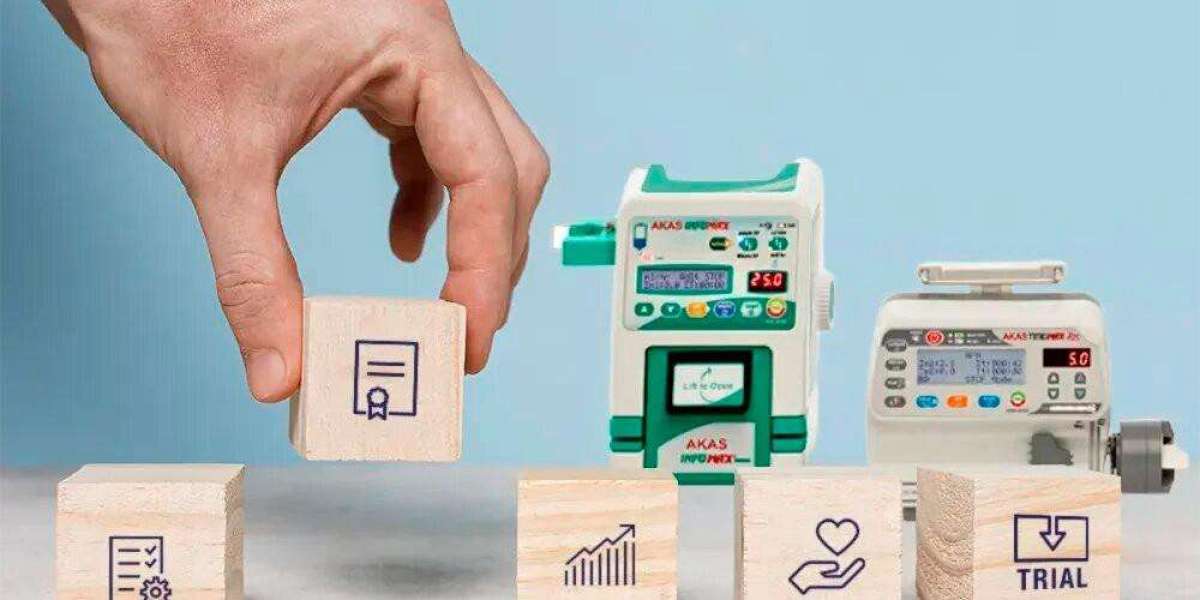A Foundation of Safety in Modern Care
- Patient safety remains at the heart of every hospital’s mission to deliver effective, compassionate care.
- In high-dependency units, intensive care, and oncology wards, timely and accurate drug delivery is critical.
- The infusion pump for hospital use plays an essential role in achieving this, with built-in alarms acting as silent sentinels.
What Are Infusion Pump Alarms and Alerts?
- Alarms and alerts are embedded features designed to detect and notify caregivers of potential infusion issues.
- These systems monitor drug flow, pressure levels, air-in-line presence, and more in real time.
- Their role is not only corrective but also preventative—acting before harm can occur.
Types of Alarms Integrated in Hospital Infusion Pumps
- Occlusion Alarms detect blockages in the tubing that may interrupt medication flow to the patient.
- Air-in-Line Alarms alert clinicians to air bubbles in the IV line, helping to prevent air embolism.
- Flow Rate Alarms notify staff when delivery speeds deviate from the programmed dosage.
- Battery or Power Alarms ensure continued function even during power failure or movement.
- End of Infusion Alerts prompt timely replacement or transition, avoiding treatment gaps.
Why Built-In Alarms Are Essential in Hospitals
- Hospitals often operate in fast-paced, high-pressure environments where precision is paramount.
- An infusion pump for hospital applications must support clinicians by acting as an extension of their vigilance.
- Alerts reduce human error, assist multitasking staff, and serve as a last line of defence in emergencies.
Improving Clinical Outcomes with Smart Alarm Systems
- Modern infusion pumps are equipped with intelligent alarm hierarchies that prioritise risks.
- These systems help clinicians distinguish between critical and minor issues without alarm fatigue.
- Hospitals benefit from streamlined workflows, with quicker response times and reduced manual checks.
Built-In Alerts and Patient-Centric Care
- Timely warnings allow immediate action, reducing complications such as under-infusion or overdose.
- Alarms protect vulnerable patients in paediatrics, geriatrics, and intensive care settings.
- Integrating alerts aligns with a hospital’s commitment to safe, tailored, and consistent care.
Training and Standardisation of Alarm Use
- Proper training ensures healthcare teams can interpret and respond to alarms efficiently.
- Standardisation across departments reduces variation and builds confidence in device usage.
- Well-documented protocols around infusion pump alerts enhance safety and support accreditation.
Supporting Nursing Staff with Reliable Technologies
- Nurses are often the first responders to infusion pump alerts during patient care.
- Built-in safety systems reduce their cognitive load and help prioritise clinical duties.
- A reliable infusion pump for hospital needs empowers nurses with tools that enhance decision-making.
Alarm Data and Clinical Audit Advantages
- Alarms generate usage data that hospitals can analyse for performance and safety reviews.
- Trends in alarm frequency can indicate equipment maintenance needs or workflow improvements.
- Data transparency builds institutional knowledge and informs procurement decisions.
Integrating Alarms into Broader Hospital Systems
- Advanced infusion pumps can now integrate with hospital information systems and EMRs.
- This connectivity allows real-time monitoring from central stations or mobile dashboards.
- Alarms become part of a broader ecosystem of care, enhancing overall patient monitoring.
Challenges in Alarm Implementation
- Alarm fatigue is a growing concern when clinicians face too many non-critical alerts.
- Manufacturers are addressing this by refining sensitivity levels and prioritising notifications.
- Hospitals must balance safety with practicality, ensuring alarms are useful—not overwhelming.
Choosing the Right Infusion Pump for Hospital Use
- Selecting the right pump means evaluating not only the device’s performance but also its alarm architecture.
- Look for devices with customisable settings that suit the needs of specific departments.
- Built-in alarms must be intuitive, reliable, and clinically validated to meet hospital-grade expectations.
The Role of Manufacturers in Safety Innovation
- Medical device manufacturers are constantly evolving their technology to support frontline healthcare workers.
- Innovation in alarm systems includes predictive analytics, wireless integration, and AI-enhanced alerts.
- Safety is engineered from the inside out—combining intelligent design with robust materials and software.
Supporting Better Patient Care Through Trusted Technology
- Every alert that prevents a medication error or identifies a blocked line contributes to better outcomes.
- Infusion pump alarms safeguard lives quietly, working around the clock in hospital rooms across the world.
- Their value lies not only in their sound but in the safety net they provide in every infusion.
Conclusion
- Built-in alarms in an infusion pump for hospital use are vital tools in ensuring safe, precise, and continuous medication delivery.
- Hospitals must choose devices that offer both technical reliability and thoughtful alert systems tailored to clinical realities.
- Akas Infusion is committed to manufacturing world-class drug delivery devices such as volumetric pumps—designed with safety, reliability, and hospital care excellence in mind.



